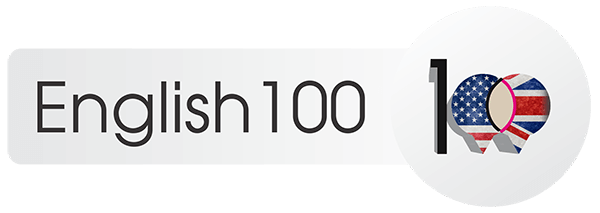Have you ever come across a document or article that was so filled with jargon and complex language that you struggled to understand its message? The use of plain English is essential for effective communication, yet it is often overlooked.
Fortunately, there are simple tips and techniques that can help you improve your use of plain English and make your writing more accessible to a wider audience. Let’s learn about them in this grateful article.
What is plain English language meaning?

Plain English language refers to the use of clear and simple language that is easy for the intended audience to understand. It involves avoiding complex and technical terms, jargon, and unnecessary complexity in sentence structure.
The goal of plain English is to communicate information in a straightforward and accessible manner, making it easier for readers or listeners to comprehend and engage with the content.
Tips to better use of plain English:
- Use simple and concise language
- Choose words familiar to your international audience
- Break down complex ideas
- Use active voice
- Avoid unnecessary words and phrases
- Organize your content logically
- Use bullet points and lists
- Define technical terms
- Test readability
1. Use simple and concise language:
Avoid using complex or technical jargon that may confuse your audience. Instead, use clear and straightforward language that is easy to understand. Using simple and concise language is essential for effective communication.
When writing in plain English, it is important to avoid using complex or technical jargon that may confuse or alienate readers. Instead, focus on using clear and straightforward language that is easy to understand.
2. Choose words familiar to your international audience:
When creating content for an international audience, it is important to use plain English to ensure clear and effective communication. One tip for better use of plain English is to choose words that are familiar and easily understood by your international audience.
Avoid using jargon, technical terms, or industry-specific language that may be unfamiliar to non-native English speakers. Instead, opt for simple and concise language that can be easily understood by a wide range of readers.
This will help to improve comprehension and ensure that your message reaches and resonates with your international audience.
Plain English saves you time and money. Clearer information is shown to reduce mistakes and complaints. 1
3. Break down complex ideas:
Breaking down complex ideas is an essential tip for better use of plain English. When communicating with others, it is important to present information in a clear and easily understandable manner.
Complex ideas can often be overwhelming and confusing for readers or listeners. By breaking them down into smaller, simpler parts, you can help your audience grasp the main points and concepts more easily.
This can be achieved by using simple language, avoiding jargon or technical terms, and providing clear explanations or examples to support your ideas. By doing so, you can ensure that your message is effectively communicated and understood by a wider range of people.
4. Use active voice:
Using active voice in your writing can greatly improve clarity and engagement. Active voice places the subject of the sentence as the doer of the action, making the sentence more direct and concise.
This helps readers understand the message more easily and keeps them engaged with the content. By using active voice, you can eliminate confusion and create a stronger connection between the writer and the reader.
So, remember to prioritize active voice when writing to ensure your message is effectively communicated.
5. Avoid unnecessary words and phrases:
Remove any unnecessary words or phrases that do not add value to your message. Keep your sentences clear and to the point. By eliminating unnecessary words, you can make your message more concise and easier to understand.
This involves removing filler words, redundant phrases, and jargon that may confuse your audience. Instead, focus on using clear and simple language that gets straight to the point. This will ensure that your message is easily comprehensible to a wide range of readers or listeners.
6. Organize your content logically:
Organizing your content logically is essential for effective communication. When your content is well-structured and organized, it becomes easier for readers to understand and follow. Start by outlining your main points and organizing them in a logical order.
Use headings and subheadings to break up your content into sections, making it easier for readers to scan and find the information they need.
Additionally, use clear and concise language, avoiding jargon or technical terms that may confuse your audience. By organizing your content logically and using plain English, you can ensure that your message is easily comprehensible and engaging to your readers.
7. Use bullet points and lists:
Using bullet points and lists can greatly improve the readability and clarity of your writing. By breaking down information into concise and easy-to-digest points, readers can quickly scan and understand the main ideas.
This format also helps to organize information in a logical manner and makes it easier for readers to navigate through the content. Additionally, bullet points and lists can make your writing more visually appealing and engaging, as they provide a visual break from lengthy paragraphs.
Overall, incorporating bullet points and lists in your writing can enhance the overall effectiveness and impact of your message.
8. Define technical terms:
When communicating with a wide audience, it is important to use plain English to ensure that your message is clear and easily understood. One tip for better use of plain English is to define any technical terms that you may use.
Technical jargon can often be confusing and alienating to those who are not familiar with the specific terminology. By providing clear and concise definitions for any technical terms you use, you can ensure that your audience is able to fully grasp your message and engage with your content. This will help to create a more inclusive and accessible communication environment.
9. Test readability:
Testing readability is an essential step in ensuring that your content is easily understood by your target audience. By evaluating the readability of your text, you can identify any areas that may be difficult for readers to comprehend.
One effective way to test readability is by using tools such as the Flesch-Kincaid Grade Level or the Gunning Fog Index, which can provide you with a numerical score indicating the reading difficulty of your content.
By regularly testing readability, you can make necessary adjustments to improve the clarity and accessibility of your writing, ensuring that your message is effectively conveyed to your readers.
Tips for Writing in Plain Language

Plain language (also called plain writing or plain English) is communication your audience can understand the first time they read or hear it. 2
- In simplicity legal writing needs readability.
- Structure the sentences well to help the text become easy for readers to understand.
- Use active voice wherever possible. Active methods of language, both written and spoken, are known as active forms. A neutral voice is called passive form.
- Use the legal documents and translators can be drawn up, who write to translators could use the statement is “only”.
- Write all in simple English without repetitions, it will improve the flow. Help by using a dictionary pro – help readability and consistency throughout your documents
- The first time Avoid hard words, neutral voice, or passive voice when applicable. Change into an active sentence for the subject of action that can take place on behalf of someone else such as an employee. For “his” in a sentence, replace with the pronouns they or their.
- They should be plain language to express how best you understand and know he is finished was because the author has used natural language which is shown throughout your documents preceding him and will avoid misunderstandings between parties.
- Don’t use complex sentences or negative language in international business English !!
- Use simple words, and clear grammar, clear communication.
- Use an abstract noun and an email to write about the first language in which you can explain the subject and so adds precision, improves clarity in your documents.
How to upgrade your plain English skills?
Improving your plain English skills can greatly benefit your communication abilities. One way to upgrade these skills is by practicing reading and writing in plain English regularly. This can involve reading books, articles, and other materials written in simple and clear language.
Additionally, actively seeking feedback from others on your writing can help identify areas for improvement. Another helpful strategy is to engage in conversations with native English speakers and practice speaking in clear and concise sentences.
By consistently working on these skills, you can enhance your plain English abilities and become a more effective communicator.
The need for plain English in global business
In plain English let’s make it official. Using plain English to communicate clearly with managers, partners, and business colleagues can help improve your career opportunities. Some of the errors in a text before it was easy for someone else to see as to why you should write documents or e-mails by applying simple language whenever possible.
Avoiding jargon that involves specialized technical terms and expressions is valuable even if “lowering” his own international business quotes key chain sentence structure will eventually make the text easier to read across a broader and target goal audience, the benefits of using a smaller number of words will likely be that it saves time or whichever country I am writing.
FAQs about mindfulness in plain English:
1. What does plain English mean?
Plain English refers to the use of clear and straightforward language that is easily understood by the general public. It involves avoiding jargon, technical terms, and complex sentence structures, instead opting for simple and concise communication.
The goal of plain English is to ensure that information is accessible and easily digestible for a wide range of readers or listeners.
2. What is the plain English sentence structure?
The plain English sentence structure follows a simple pattern of subject-verb-object, where the subject is the one performing the action, the verb is the action being performed, and the object is the recipient of the action.
3. What is plain language example?
A plain language example would be simplifying complex information or instructions in a way that is easily understood by a wide audience. For example, instead of using technical jargon, a plain language example would use clear and concise language to convey the same information.
‘We need to ensure that official documents – from Social Security forms to White Papers – are useful and comprehensible. The Plain English Campaign has a splendid track record in nudging us all towards making this happen.’
Sir John Major, former Prime Minister
4. What is plain English style?
Plain English style refers to a writing and communication approach that prioritizes clarity, simplicity, and accessibility. In plain English, complex ideas are conveyed using straightforward language and clear, concise sentences, making the information easy to understand for a wide audience, including those with limited English proficiency or specialized knowledge in the subject matter.
Plain English avoids jargon, technical terms, and unnecessary complexity, opting instead for everyday language and familiar expressions. This style aims to eliminate ambiguity, reduce confusion, and enhance comprehension, making it particularly effective for communicating important information in fields such as law, government, healthcare, and finance. In essence, plain English style emphasizes effective communication that is transparent, inclusive, and easily understood by all.
5. What is plain English method?
- The plain English method is a way of writing or communicating information in a clear and simple manner.
- It involves using everyday language that is easy for the average person to understand.
- The goal of the plain English method is to remove jargon, complex terms, and unnecessary technical language from communication.
- By using plain English, information becomes more accessible and user-friendly, making it easier for people to comprehend and engage with the content.
6. What is plain English UK?
- Plain English UK is an organization that promotes clear and simple communication.
- It focuses on making information easier to understand for a wide range of audiences.
- Plain English UK provides training and resources to help individuals and businesses improve their communication skills.
- The organization aims to eliminate jargon, complex language, and unnecessary technical terms in various forms of communication.
In conclusion, using plain English in communication is a great way to ensure that your message is clear and easy to understand. By practicing reading and writing in plain English regularly, actively seeking feedback from others on your writing, and engaging in conversations with native English speakers, you can improve your plain English skills and become a more effective communicator.
References:
- Plain English – Nala. (2023, June 8). Nala. https://www.nala.ie/plain-english/
- plainlanguage.gov | What is plain language? (n.d.). https://www.plainlanguage.gov/about/definitions/
